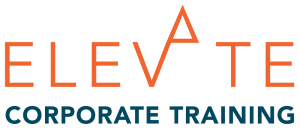There are plenty of people out there selling a lot of products and services. Unfortunately, most aren’t successful. Only one out of 250 salespeople consistently hit or exceed their targets.
It doesn’t happen by accident. In today’s environment, true sales stars have developed a proven formula of sales techniques to generate new business. While personal skills and experience are part of their success, rising to the top in sales requires more. The best sales teams know it takes learning and applying this formula consistently to perform.
Here’s what you need to know.
Sales Process: Schedule Sales Prospecting
Few salespeople like the prospecting phase. It’s one of the less enjoyable, but also one of the most important, tasks that successful salespeople undertake. If you can’t keep your sales funnel full at the top, you’re not going to get the results you want at the bottom where it really matters.
Schedule time to prospect. Mark it on your calendar.
Whether it’s daily or weekly, block out the time and force yourself to do it.
If you find you aren’t producing the results you need, try different days of the week or times of the day. What days of the week and times work best? It depends on which experts you want to listen to. Try doing an online search for “Best time to make sales calls” and you’ll get more than half a billion listings and lots of different opinions. Find what strategy works for you.
Today, you can do much of the initial research online. The best way is to search for prospects online and make a few notes about their business so your approach becomes a warm call rather than cold calls.
Sales Process: Always Ask for Referrals
One of the best ways to shortcut the prospecting process is to ask current customers for referrals. Top sellers know that referrals pay off. The person providing the referral has given you an implied endorsement and dropping their name when making contact can help open the door.
Yet, nearly 58% of all salespeople ask for one referral or less each month. 40% report that they rarely ask for referrals.
Sales Process: Spend the Time it Takes to Qualify Leads

You can waste a lot of time and effort chasing prospects that are never going to buy what you have to offer. Stop. Spend the time it takes to qualify your leads to make sure they have the need, means, and authority to buy. Only then is it worth investing your most precious commodity – time.
This can be difficult for most sales teams. When you’re already vested in a prospect and spent some time developing the lead, it’s hard to walk away. It’s known as the Sunk Cost Fallacy. However, if prospects aren’t qualified, a further sales pitch is just wasting your time and effort.
If you’re using marketing automation, much of the nurturing can happen automatically to drive prospects through the customer journey to help them transition from marketing-qualified leads (MQLs) to sales-qualified leads (SQLs). Just make sure to review your lead scoring to ensure the algorithm is basing decisions on the proper metrics.
Selling Techniques: Do a Diagnosis
If everything’s going well, there’s no reason for someone to buy your products or services. Your best pathway is to find the unique challenges each business is facing and present specific solutions that solve their problem. as part of the selling process.
Approach each potential customer the way a doctor might. They listen for symptoms of problems and then ask a series of sales questions to try to uncover the underlying problem. They may need to test their theory by asking more questions or running tests. They diagnose their needs and pain points before offering a solution.
During a sales call, listen for the company culture. You’re often trying to disrupt the status quo during your sales calls if you hope to close a deal. To do so, you’ll have to stop thinking like a salesperson and adjust your selling techniques and viewpoint to think more from the company way or customer viewpoint.
Build a Relationship
Let’s face it. B2B Salespeople don’t have the best reputation. Ask someone to describe a typical and salesperson and you’ll hear adjectives such as pushy, obnoxious, or manipulative. Most of the top salespeople we know are the exact opposite of that. They’re confident, empathetic, and put their customer needs first.
In working with sales prospects, however, you’re going to have to get past their defenses and preconceived notions about who you are and how you operate. You’ll need to build a relationship to do that.
One of the most effective ways is to show a genuine interest in people, their job, and their needs. Most people love talking about themselves. It’s an easy way to get started in the discovery phase and there’s also a science behind it. When people talk about themselves, it stimulates the neural regions that are linked to pleasurable feelings and motivation. When asked questions about themselves, the effects were additive. In other words, the Q&A about personal information created an even greater openness.
Instil Trust

Sales don’t happen without trust. B2B sales prospects won’t buy if they’re not confident in your solution. There’s simply too much risk for them.
Much of your job during the selling process is risk mitigation. If you can remove this risk and build trust during your sales pitch, you’re more likely to convert. When you’re presenting, it’s not so much about sales as it is about building the buyer’s confidence in your solutions.
Sadly, only 3% find salespeople trustworthy. That’s why effective sales training focuses so heavily on build on trust-building strategies. You need to develop credibility, reliability, and intimacy in the eyes of the customer to establish trust.
Building Trust with Clients
Modify Your Approach
While each sales rep has their own style and way of approaching customers, research shows that three specific approaches generated the most conversions over time.
- Consultants
- Experts
- Closers
Consultants are great listeners and expert problem solvers. They zero in on the challenges people are facing and find customized solutions that solve their problems.
Experts know their craft inside and out. These sales team members can often make selling seem effortless while consistently outperforming their peers with proven sales methods.
Closers are typically smooth-talkers. While their style can be off-putting for some, they excel at overcoming objections and driving product sales.
While these three groups are the top performers in sales organizations, they typically only make up 37% of a sales team. This is where sales training can make a significant difference.
Sales Techniques: Tell Stories

Humans are natural-born storytellers. It’s the way information has been handed down from generation to generation and can drive powerful sales.
You wouldn’t start out telling your friend about an auto accident you saw by enumerating the statistics on car accidents. Why do we do that in sales? We often bury people with stats and details that don’t register while ignoring opportunities to tell stories that can resonate.
“Let me tell you how our product/service made a difference for Mary” is a powerful sales tool. Case studies, success stories, and testimonials all demonstrate that others made the commitment to work with you and found it beneficial. It also helps if you’re trying to disrupt the status quo.
B2B consumers are doing a lot of research online. Business buyers are reading reviews. You might as well show them positive (and hopefully glowing) reviews from real customers rather than anonymous people online.
Use Testimonials
Testimonials build trust, overcome skepticism, and they’re more believable. It also reinforces what you’re saying by backing up your claims.
Consider the use of video testimonials from satisfied customers. When they say their sales increased because of the product or service you’re selling, it’s more believable than putting the same information in a slide. It also helps prospects see themselves as being successful. This used to be difficult and require lots of preplanning and maybe even professional equipment. Today’s cell phone cameras produce great images. You can even ask customers to record them and send them to you.
When asking for testimonials, provide a bit of guidance. You want to demonstrate tangible results linked directly to your product or service. It’s much more powerful to have them say they reduced their time-to-market by 32% or increased sales 18% by implementing your solution rather than making a generic statement.
Best practices for this sales technique include having the person doing the testimonial say their company name, explain their problem, tell how you presented a solution, and then unveil the results. Here’s an example of how this might work:
We were struggling to manage our inventory effectively. We were constantly running out of high-demand products. Laura suggested we use their inventory management software to better manage our supply chain. After implementing it, our out of stocks dropped by 40% and our gross revenue improved by 22% overall.
Make your testimonials short, sweet, and to the point. If you can’t get customers to record videos, get a quote, or tell their story. A few slides in a PowerPoint presentation showing a smiling client’s picture with how it grew their business is more powerful than page after page of stats and sales points.
Provide Buying Options
While we know that providing too many options can lead to paralysis on the part of buyers, you may want to consider giving them an option or two in your meeting. This reinforces that it’s their decision since they’re picking the option. It gives them confidence that they’ve made the right choice.
The Journal of Consumer Research published the results of an interesting experiment about buyer choice. When consumers were shopping for DVD players, salespeople were instructed to use various approaches. In the first group, they presented a Sony DVD player. In the second group, they recommended a Philips DVD player. A third group presented both options as part of the buying process.
When only one option was presented, just 10% of consumers purchased. However, when the two options were shown, sales increased by nearly two-thirds (66%). The study’s authors concluded that buyers were able to compare and choose the option that represented the lowest risk.
Many successful salespeople use the rule of threes. By providing a low-cost option, a medium-priced option, and a high-priced solution, business buyers often choose the middle option because it feels safer.
Ask for the Sale
It’s astounding how many salespeople invest their time and effort into prospecting, qualifying, diagnosing, and presenting solutions…and then never ask for the sale. They get to the end of the presentation and ask if there are any questions. After silence, they then when they can schedule follow-up calls or another meeting.
There’s an innate fear of rejection that we all have. We may feel uncomfortable putting someone on the spot or worry we’ll come off as pushy. It’s something you’re going to have to overcome to be successful at sales. Sales training can help. So can role-playing.
If you believe in your solution and know it will help your customer’s business, why would you ever be afraid to close?
Using active listening skills is a great way to uncover objections – a key strategy in the sales cycle. When you ask for the sale and they aren’t ready, it gives you the opportunity to probe for objections and overcome them.
Provide Closing Options
Often, sales reps get to the end of a sales presentation and you get an all too common response: “I need to think about it.”
When that happens, one effective sales technique that can help you uncover objections and find out where you really stand is to present the next steps. For example, you might want to give buyers three choices:
- Move forward with the plan
- Move forward with revisions
- Stop the sales process
If they choose option #1, congrats! You’ve made a sale. Option #2 allows you to focus the conversation on what needs to change to get them to commit.
Option #3 is striking in that you’re giving them permission to send you away and stop the sales process completely. If they choose this option, turn the conversation towards getting feedback on your presentation and why they chose to stop. This can be valuable information in two ways. First, it can lead you to uncover the real objection. Maybe they don’t have the budget for what you’re proposing or they don’t have the authority to make a decision. Secondly, it can help you tailor your presentation for other customers.
Here are two less formal approaches you may want to consider. You can ask prospects:
- On a scale of 1 to 10, can you tell me how interested you are?
- Are you leaning towards buying or away?
Both cases can tell you a lot about where they are mentally and help you frame your follow up questions.
Effectively Handle Company Objections

Elmer Leterman was a veteran insurance salesman that penned a book on sales that summed things up beautifully: “The sale begins when the customer says no.”
In sales, much of the work you do gets you to the end game. That’s where you find out what’s stopping your buyer from committing and then taking on these objections one at a time. When you get an objection or sales question, follows this process:
- Practice actives listening so you understand their issue
- Repeat back what you hear
- Validate their concern
- Probe for information
- Provide solutions
Until you overcome a customer’s objections, you’re not closing the deal.
Keep in mind that when price is the final objection, two things are most likely occurring. The first is that you’ve sold them and they’re just trying to get a better deal. That’s a good buying signal! The second is a little trickier.
Their objection is rarely about the actual price. It’s more about the value of what you’re selling. If they believed your product or service would solve their problem and provide the results you say, price becomes less of a barrier.
Of course, one of the best methods to overcome objections is to anticipate them. As you get to know your customers and their industry, you’ll come to know the most common ones. Address them before they do. You won’t hit your sales numbers or build a successful sales career without overcoming objections.
Practice & Be Confident
Soccer teams may practice for a week to take on one opponent. How often do you practice your sales presentation techniques?
Like most everything in life, the more you practice something the better you get. Consider sales team role-playing with managers or peers to refine selling techniques. This can help you avoid making a mistake when you’re in front of a prospect. It can also help boost your confidence – which is a key ingredient in your sales recipe.
Sales professionals that practice active listening and speak confidently about products or services – and their body language reflects it – provide a more compelling sales story. That can only happen if you truly believe the solution that you are offering will solve the pain points for the customer. If you’re faking it, you’ll be discovered and it can kill the deal.
Confidence can be contagious. It can help you close more deals.





